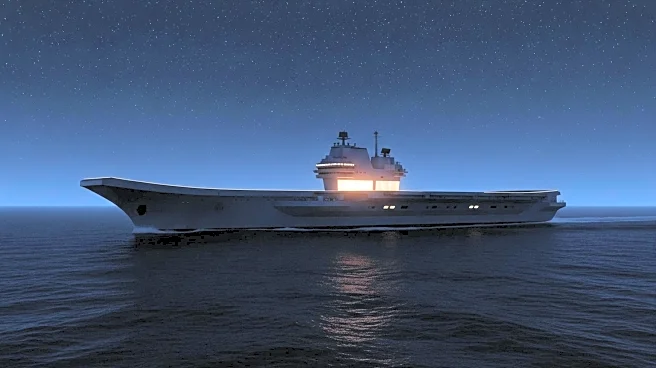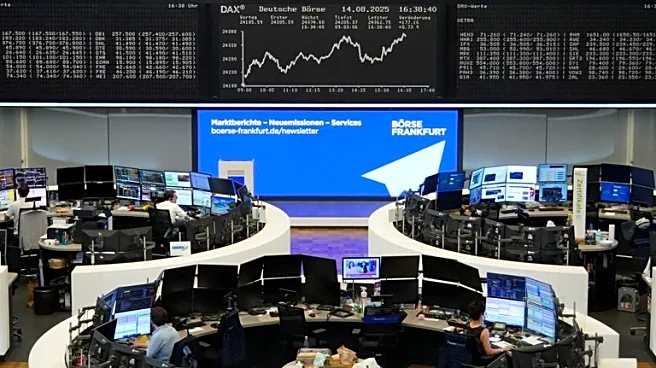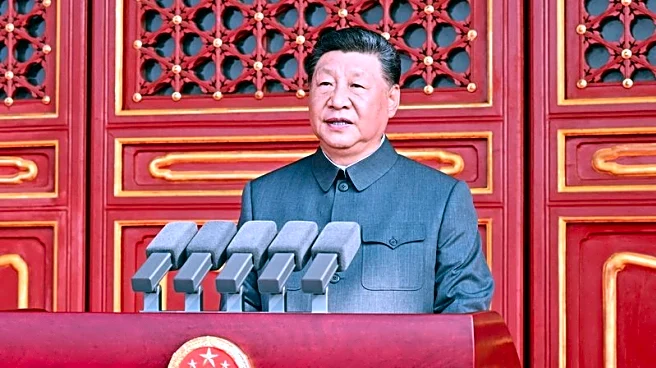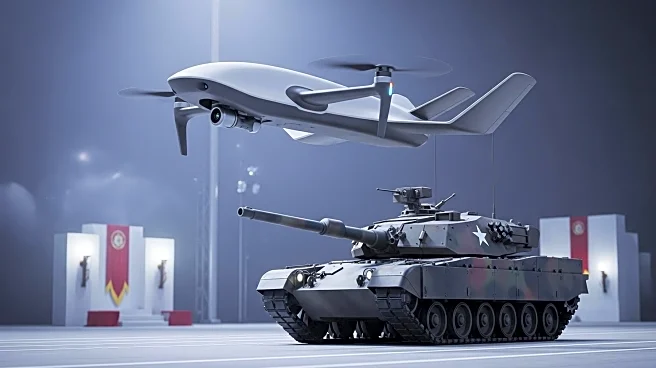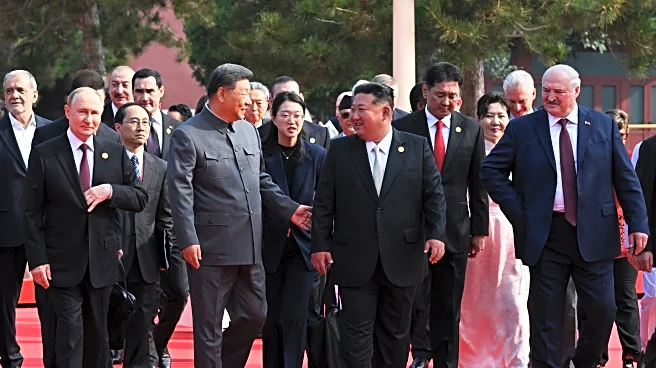What's Happening?
India is considering the construction of its third nuclear-powered aircraft carrier as part of a 15-year defense modernization plan. This initiative aims to bolster India's naval capabilities and reduce reliance on foreign suppliers. The plan includes the induction of Indian-made fighter jets for the navy, marking a significant shift towards domestic defense production. The defense ministry's roadmap emphasizes the need for private-public sector partnerships and outlines the requirement for nuclear propulsion systems to support future warships. India has already signed a deal with France for Rafale-Marine jets to be deployed on its carriers, INS Vikrant and INS Vikramaditya.
Why It's Important?
The development of a nuclear-powered aircraft carrier represents a strategic move for India, enhancing its naval reach and operational stealth. This shift towards domestic production could reduce dependency on foreign defense suppliers, potentially impacting global defense markets. The emphasis on drones and electromagnetic aircraft launch systems indicates a modernization of India's military capabilities, which could alter regional power dynamics, especially in the Indian Ocean. As the world's fourth-largest defense spender, India's increased investment in defense could influence geopolitical relations with neighboring countries like China and Pakistan.
What's Next?
India's defense modernization plan will likely lead to increased collaboration between private and public sectors, fostering innovation in domestic defense technology. The procurement of advanced systems like electromagnetic aircraft launch systems may prompt further strategic partnerships with countries like the United States. As India continues to expand its naval capabilities, regional stakeholders may respond with adjustments to their own defense strategies, potentially leading to shifts in regional security dynamics.
